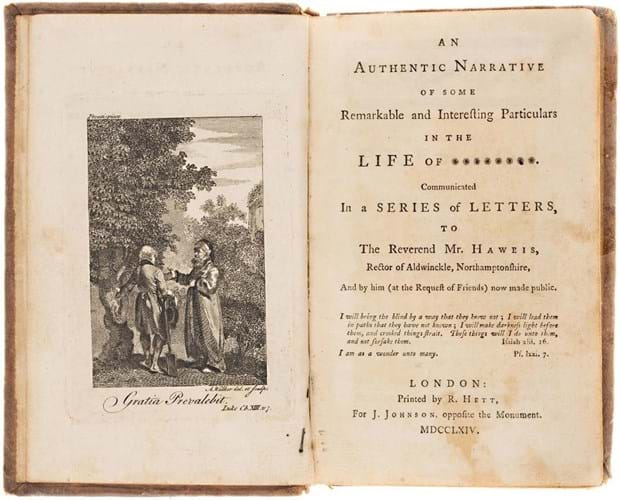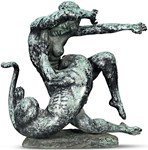
After renouncing his previous role and becoming a Church of England clergyman, Newton published an autobiography with the title An Authentic Narrative of some Remarkable and Interesting Particulars in the Life of ********. Communicated in a series of letters to the Reverend Mr Haweis, Rector of Aldwinckle, Northamptonsire.
Newton recounts that although he was a captain of slave ships, and indeed spent some time as a slave in Sierra Leone, he repented to become a preacher, and a critic of slavery.
He was appointed curate at Olney in Buckinghamshire with the support of Thomas Haweis, and was later rector of St Mary Woolnoth in London where he became friends with Hannah More and William Wilberforce.
Newton’s autobiography was first published in 1764 and proved popular, with a second printing in the same year and many subsequent printings in both England and in the US where editions were published in Philadelphia (1783, 1792, 1795) and New York (1796).
Auction debut
The first edition is remarkably scarce with only a handful of copies recorded in institutional libraries, and no copies sold at auction – that is until December 13 when Forum (26/25/20/12.5% buyer’s premium) offered a first edition with an estimate of £400-600.
There was great interest and it took a bid of £7000 hammer to secure the lot.
This price seems high even for a first edition, if compared to William Wilberforce’s own copy of a 6th edition (1786) which was sold at Christie’s in 2007 for £360, including premium.
The answer to the record price might be solely due to it being a first edition, but it is possible that the ownership signature of Mary Ann Johnson was a factor.
Could it be that this was the same Mary Ann Johnson described in a newspaper report of her death in 1846 as an ‘American woman of colour’ who married the Royal Navy pensioner John Johnson, who had been born in Guadeloupe and whose father had been a slave?














